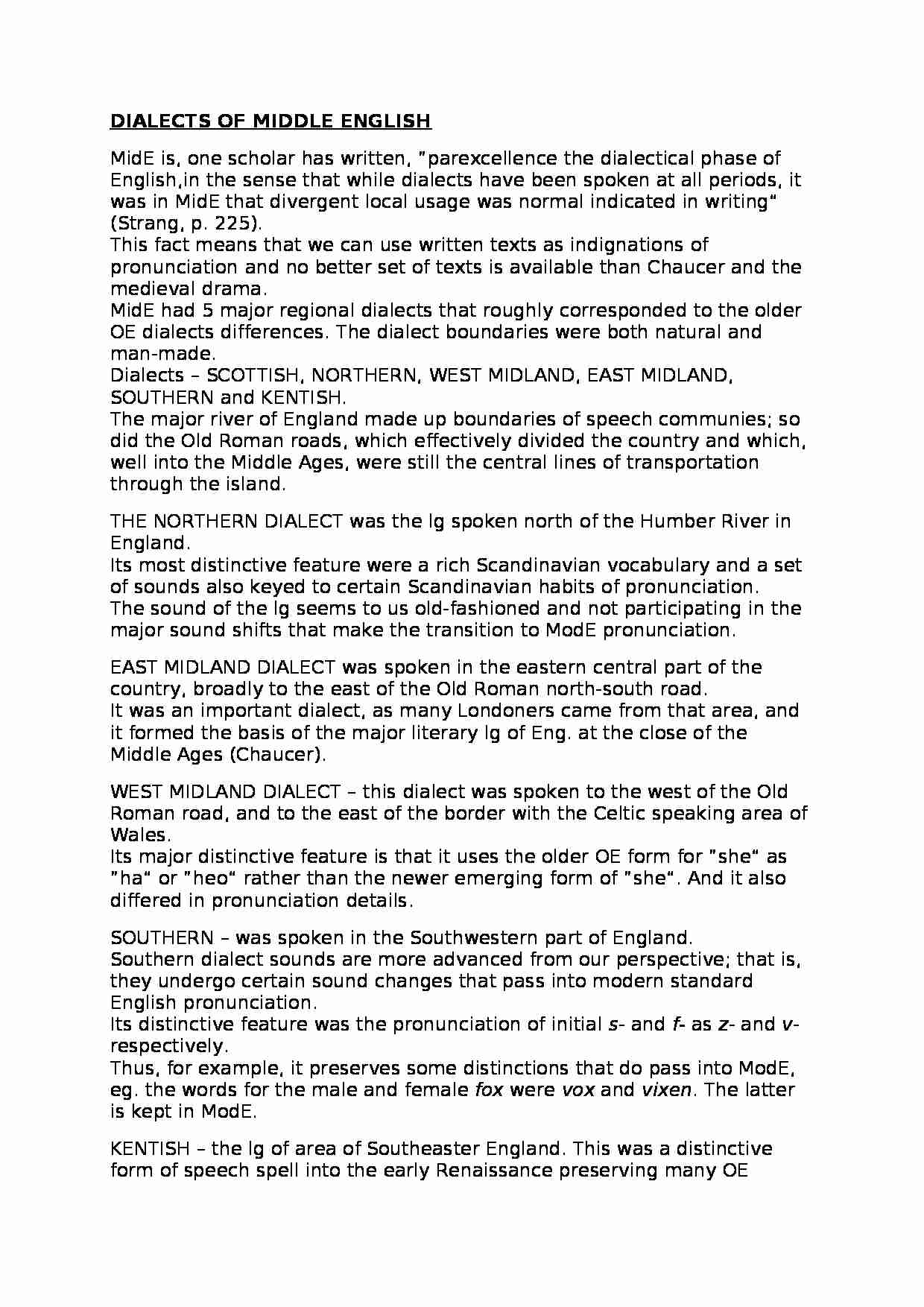To tylko jedna z 2 stron tej notatki. Zaloguj się aby zobaczyć ten dokument.
Zobacz
całą notatkę


DIALECTS OF MIDDLE ENGLISH
MidE is, one scholar has written, “parexcellence the dialectical phase of English,in the sense that while dialects have been spoken at all periods, it was in MidE that divergent local usage was normal indicated in writing” (Strang, p. 225). This fact means that we can use written texts as indignations of pronunciation and no better set of texts is available than Chaucer and the medieval drama. MidE had 5 major regional dialects that roughly corresponded to the older OE dialects differences. The dialect boundaries were both natural and man-made. Dialects - SCOTTISH, NORTHERN, WEST MIDLAND, EAST MIDLAND, SOUTHERN and KENTISH. The major river of England made up boundaries of speech communies; so did the Old Roman roads, which effectively divided the country and which, well into the Middle Ages, were still the central lines of transportation through the island.
THE NORTHERN DIALECT was the lg spoken north of the Humber River in England. Its most distinctive feature were a rich Scandinavian vocabulary and a set of sounds also keyed to certain Scandinavian habits of pronunciation. The sound of the lg seems to us old-fashioned and not participating in the major sound shifts that make the transition to ModE pronunciation.
EAST MIDLAND DIALECT was spoken in the eastern central part of the country, broadly to the east of the Old Roman north-south road. It was an important dialect, as many Londoners came from that area, and it formed the basis of the major literary lg of Eng. at the close of the Middle Ages (Chaucer).
WEST MIDLAND DIALECT - this dialect was spoken to the west of the Old Roman road, and to the east of the border with the Celtic speaking area of Wales. Its major distinctive feature is that it uses the older OE form for “she” as “ha” or “heo” rather than the newer emerging form of “she”. And it also differed in pronunciation details. SOUTHERN - was spoken in the Southwestern part of England. Southern dialect sounds are more advanced from our perspective; that is, they undergo certain sound changes that pass into modern standard English pronunciation. Its distinctive feature was the pronunciation of initial s- and f- as z- and v- respectively. Thus, for example, it preserves some distinctions that do pass into ModE, eg. the words for the male and female fox were vox and vixen. The latter is kept in ModE.
KENTISH - the lg of area of Southeaster England. This was a distinctive form of speech spell into the early Renaissance preserving many OE forms, sounds and distinctive words. Documents in Kentish also preserve the older OE case endings more than any other MidE dialect.
... zobacz całą notatkę




Komentarze użytkowników (0)